India is not one, it is many. There is an India that lives below the poverty line (ie those who spend less than Rs 47 per day in cities). There is an India that probably doesn’t think twice before chartering a flight halfway across the world to taste an exquisite Argentinian liquor. There is an India which believes that engineering and medicine is the only way their kids can have better careers (in effect, better lives). [caption id=“attachment_2546246” align=“alignleft” width=“380”] 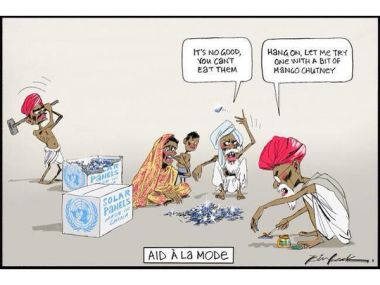 Bill Leak’s cartoon that appeared in The Australian. Image Courtesy: Twitter/@BLeakEksplayned[/caption] Each morning, when I step out of my house in Mumbai to go to work, I am acutely aware of the homeless men lined along the pavement, trying to shield themselves from from the early morning chill. But here is the thing, I am also aware of the world of the rich and middle classes, who have comfortable beds to sleep on; they do not have to worry about where their next three meals are coming from. Hunger, poverty and misery is all around us, we can’t un-see it just as we cannot un-see the rising middle classes and vast technological progress that India has made over the years. However, the western media, let’s be blunt and call them the predominantly white media has not particularly taken note of these varying Indias that are parts of the whole. Their narratives thrive on depicting the lesser/the other, in a bid to perhaps make themselves feel better? The trope of the Indian ’exoticism’ is nourished better through an image of India that is still only a land of snake charmers, dust and grime, and poor children that perhaps need ‘saving’ from poverty, rape etc. Authors Clint C Wilson, Felix Gutierrez and Lena Chao in their book, Racism, Sexism and the Media have treatised about “the threatening issue phase" where non-white subjects become news because they are perceived as a threat to the social well being of the country/nation in general. Immigration, terrorism, Muslims are threats that do not bode well for the insiders. The inside — is otherwise unadulterated and perfectly functioning. Recently, The Australian, depicted starving Indians who were cutting and eating solar panels. One says that it is inedible, the other says that some mango chutney might help with the ingestion. The internet (inclusive of people from various countries not just India) broke out in support of India and called the cartoon racist. The cartoon was drawn by Bill Leak who is generally infamous for the racist overtones in his work. Someone should perhaps leak the information to Bill that a significant number of skilled migrants in Australia come from India. The Australian promptly defended the work under the umbrella of freedom of speech. A statement by the paper quoted in The Guardian reads, “The cartoon does not intend to ridicule Indians but the climate change activists who would send poor people solar panels rather than give them something they need – cheap power, aid and a hand up.” Sorry, but I will also exercise my freedom of speech to say that ‘cheap power, aid and a hand up’ help you resolve your ‘white man’s burden’; making the economy dependent on environmentally hazardous sources of energy rather than self reliant technology — a goal that the country is vocally looking to fulfill is not particularly the ‘hand up’ that India is seeking. Thank you for your free speech though. [caption id=“attachment_2546250” align=“alignleft” width=“380”] 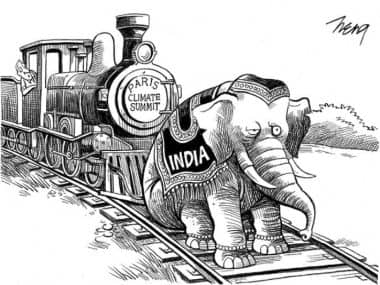 Cartoon that appeared in New York Times. Image Courtesy: Twitter/@samjawed65[/caption] The cartoon in question (Bill Leak’s) is loud when it says these few things: First, that India needs to first tackle its poverty situation, only after it has been remedied can India dare to think about other things. Second, India probably does not need to speak about matters it should not be concerned with. Third, India should not speak out of turn. The cartoon was a response to the proceedings that took place at the Paris climate conference. As per the agreement finalised through COP21, developed countries must take the lead in emission reduction targets and developing countries should work on mitigating their efforts. The New York Times on 6 December 2015 depicting a train (climate conference) halted by an elephant (India). India, though portrayed as a villain in the western media for its stance in the conference, has truly performed the role of the proverbial proletariat taking on the big wigs and saying no to their bullying. India has emerged as a sophisticated negotiator and is making a space for itself on the larger picture by holding developed countries accountable for the harm they have already done. At the same time India is making villages and towns more renewable energy source friendly — major cities in India are pushing for LED street-lighting , many villages have gotten solar power plants . The West has the idea that India’s biggest problem is its poverty and that the country needs to tackle those issues of ‘higher importance’ before doing anything else. This was the criticism that was meted out during the Mars mission that cost less than $74 million (the making of the film Gravity cost more, FYI). India was blamed for squandering money on a space mission instead of alleviating poverty, poor healthcare and reducing crimes against women. The New York Times had in 2014 carried a severely racist cartoon where a group of ‘well-dressed men in suits’ are sitting in an “elite space club” and outside a man wearing a dhoti and vest, leading his cow and knocking on the doors of this exclusive club. [caption id=“attachment_2546264” align=“alignleft” width=“380”] 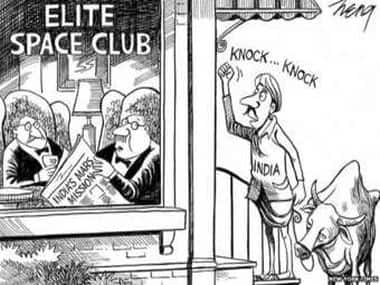 Cartoon that appeared in The New York Times about India’s Mars Mission. Image Courtesy: Twitter/@yunussait[/caption] The imagery cannot be more obvious — the miserable, poor, starving and definitely backward Indian who cannot match up to the bourgeoisie, is stepping into shoes that are too big for himself — according to the decisive, cultured and intelligent men sitting inside that symbolic club. The popular idea is that India needs to get its priorities right and that it doesn’t need any technologies related to climate change or a space mission as long as its people are healthy and not starving — all true, but who is to say that these goals exclude one another and that these problems cannot be tackled simultaneously? A strong space programme brings benefits to everyday citizens by bringing information through mapping, weather observation and increased military capacity. Poverty alleviation, healthcare and gender awareness programmes all exist under various ministries and function with the money allocated to them. Perhaps critics can find avenues to nit-pick budget allocations, but questioning India’s foray into the game-changing/decision-making fields is preposterous and small-minded. The cartoons are not just racist, they are ill-informed by a stereotype of India and its citizens; unfortunately we are no longer amused. They are acutely unaware depictions of an India they are all nostalgic for — poverty ridden, miserable, sad, and a place that needs to be fixed. Nobody likes an India that does not make a heart-wrenching background of a great novel. Nobody likes an aspirational or aggressive India.
The cartoons are not just racist, they are ill-informed by a stereotype of India and its citizens; unfortunately we are no longer amused.
Advertisement
End of Article
Written by Vishnupriya Bhandaram
Cultural anthropologist with a terrific nose for news. Obscure music hound. Rarely bored — always scrolling, always reading. see more


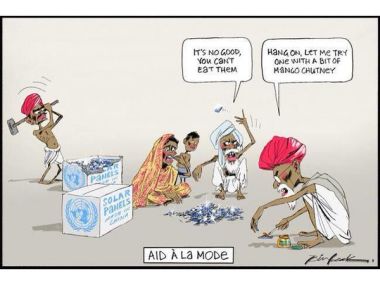)
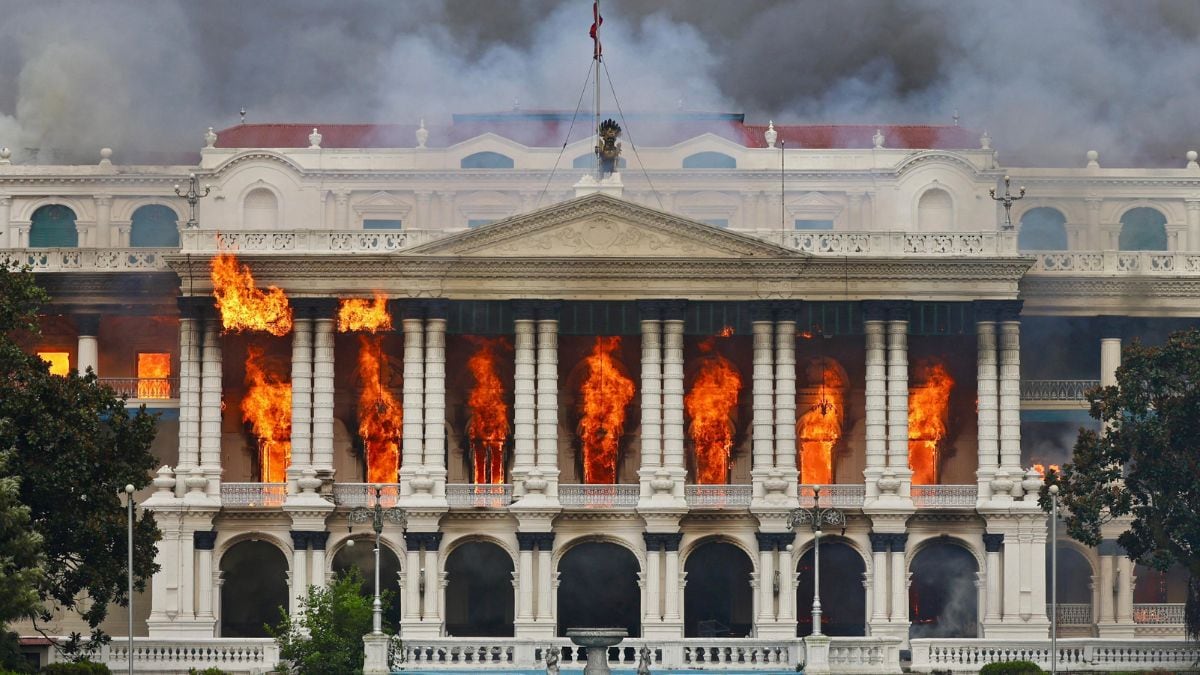
)
)
)
)
)
)
)
)



